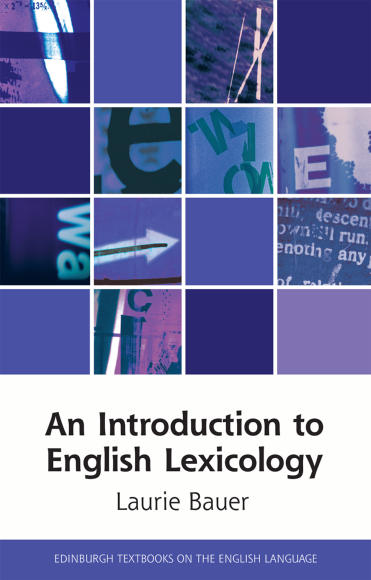
by Laurie Bauer

An Introduction to English Lexicology is my fifth textbook published with Edinburgh University Press.
The first was Introducing Linguistic Morphology (1988, 2nd edition 2003) and was based on my teaching material from Victoria University of Wellington. At the time there were very few textbooks in morphology, and those available were either rather dated or hard for students to understand. Several other textbooks in the subject appeared after mine, as the subject became a more central area of teaching.
Moving Away from Morphology
The second was An Introduction to International Varieties of English (2002), again based on my own teaching material, but also the first such book to be organised according to areas of linguistic study (phonology, syntax, etc.) rather than by geographical area.
The third was The Linguistics Student’s Handbook (2007, 2nd edition 2021). This was a very different enterprise with a different aim. I had come to realise that as the subject-matter of linguistics grew, teachers had less time to spend on notions which had been basic to the development of the subject, and students were often left with gaps in their knowledge which teachers tended to presuppose they knew. Also, the knowledge that students had on coming to university was changing: a knowledge of Latin and French could not be assumed if the students were of Chinese or Japanese descent, for example.
Returning to the Fold
The fourth textbook was Rethinking Morphology (2019), written just after I retired. As Introducing Linguistic Morphology became outdated by developments in the subject, and as my own appreciation of the subject changed as a result of my own research and my reading of the research of others, I felt that I was in a position to give a different kind of overview of the field, in a way which might support a different kind of student.
My latest book, An Introduction to English Lexicology (2022) was written at the instigation of Heinz Giegerich, who is the general editor for the Textbooks series. At first I was reluctant to take it on, but the more I thought about it, the more I felt that I might have something to offer in this area, looking at words in a rather different way from the one I was used to.
The Importance of Textbooks
In all my textbooks, I have tried to present the material as interesting and open-ended. We do not know the answers, and there are always unsolved problems, which it seems foolish to ignore. Not only do students need to know there are new insights for them to make, they need to realise that what they see in any theoretical package, is only part of the subject area – usually a carefully selected part.
For many years it has been the practice among administrators to denigrate the writing of textbooks. I feel strongly that this is wrong. A good textbook involves getting to grips with the fundamental of the subject – always the hardest bits of the subject to explain fully – and explaining the material as simply and as clearly as possible. Nobody succeeds all the time, but a textbook has the potential to bring about innovation in the field it covers and to define the pensum of the subject for a number of years. All these things make textbooks difficult to write and immensely influential. We should not penalise academics who want to inspire the next generation of students to consider their field carefully.
My Thanks to EUP
From the very beginning, I have been made to feel part of the family at Edinburgh University Press, who have been helpful, supportive and extremely professional, and I am very grateful to them for all they have done for me over the years.

About the Author
Laurie Bauer is Professor of Linguistics at the Victoria University of Wellington. He is on the editorial board of the journal Word Structure.
About the Book
This textbook explores the history, meanings and structure of words, the way they are collected in dictionaries and the way they are stored in our minds. It goes beyond examining the morphological structure of words to examine the way words are spelt and the way they sound. At every stage, the book focuses not only on description, but also on the puzzles that words present. Supported by numerous examples, exercises, discussion questions, suggestions for further reading and a glossary, this is an accessible and lively guide to the linguistic study of English through the consideration of words.






